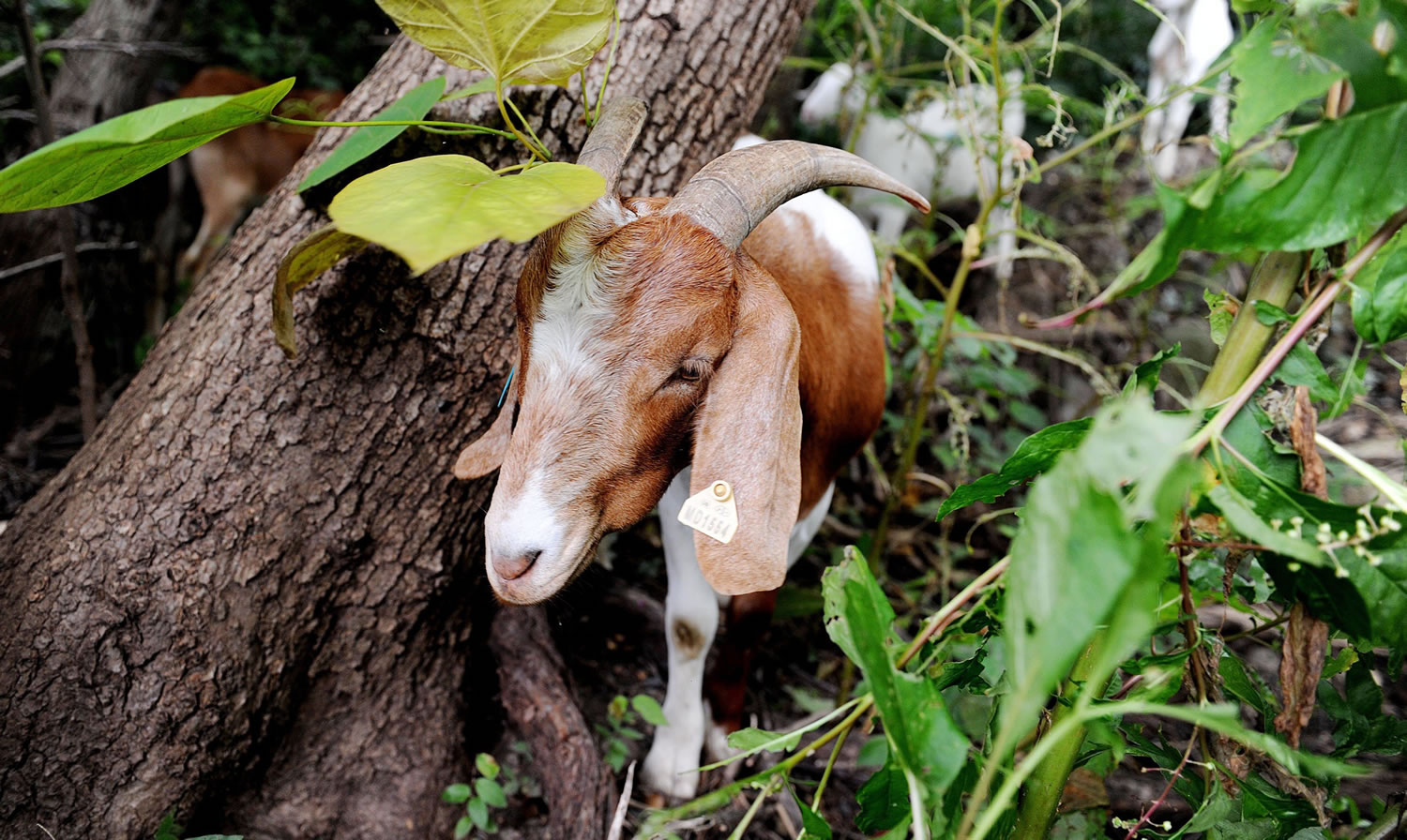WASHINGTON — The bleating of the goats Wednesday didn’t disturb the residents of Congressional Cemetery, a burial ground for hundreds of senators, congressmen, a couple of vice presidents and iconic figures such as FBI chief J. Edgar Hoover and composer John Philip Sousa.
For the next week, the 70 goats — known as “eco-goats” — will eat the vines, poison ivy, dense vegetation and anything they can reach to clean up a densely vegetated parcel on the cemetery grounds.
“We’re trying to prevent invasive species from eating the trees and having them fall on the historic headstones,” said Paul Williams, the president of the Association for the Preservation of Historic Congressional Cemetery. “We don’t want to utilize chemicals, due to our riverside location and because of our membership-only, off-leash dog-walking program.”
About 25 percent of the graveyard’s funding comes from nearby residents who pay a fee to walk their dogs along the 35-acre patch, as a roster of historic personalities, including Civil War photographer Mathew Brady, sleep for eternity below their pooper scoopers.
The floppy-eared brown and white goats, including Yoda, Buckaroo and Mimi, were camera-shy environmental pioneers at first, refusing to leave their trailer, emerging briefly and then running back in to avoid news crews.
After the cemetery and Humane Society officials moved the media herd, the goats ran into the 1.6-acre enclosed area and started doing what they do best: chomping everything green and leafy in sight. The sight of them chewing vines and their fairly constant bleating delighted about a half-dozen children.
“It’s actually an ancient custom,” said Williams, who’s trying to be innovative and to bring new life and activities to the cemetery. “I kind of hope it opens people’s minds to alternatives.”
‘Eco-mowers’
Hiring the 70 goats is a thrifty move, too. They’re capable of reaching vines as high as 7 feet, and the bill for their trouble will be $4,000 for six days of work, which Williams said worked out to a bargain.
“This is an exciting opportunity for us to demonstrate the positive aspects of using goats to help reduce and control problem vegetation,” said Brian Knox, the owner of Eco-Goats in Annapolis.
The city of Paris began using sheep this past spring as eco-mowers to keep the lawn trim outside the French capital’s municipal archives.
Congressional Cemetery is quite tidy, dotted with small trees among the headstones, obelisks and monuments known as cenotaphs, memorials for those buried elsewhere. A quaint chapel sits in the middle of the grounds, along with a public vault that dates to 1832, where the remains of many famous deceased were stored temporarily before being buried elsewhere, including first lady Dolley Madison.
Two hundred members of Congress and their families are buried at the cemetery, which is owned by Christ Church. The “congressional” in the name is because of its occupants; there’s no official connection to the U.S. Congress.
‘The first park system’
Williams is trying to bring back the way people once thought of cemeteries. “In the Victorian era, cemeteries used to be a regular picnicking spot,” he said, “They were like the first park system.”
Chris Kennedy, a board member of the cemetery’s nonprofit association, lives nearby and enjoys bringing his dogs to the parklike setting, which he called a “unique and a beautiful thing.”
Adding goats, he said, was “a cool thing. It’s historical. It’s ecological.”
Might goats or sheep on the National Mall be not too far off?
“I would not expect that,” said Carol Johnson, a National Park Service spokeswoman for National Mall and Memorial Parks. “As far as I know, it has never been considered. There could be unintended consequences of resource damage.”
But, she added, “It’s certainly an interesting idea.”



